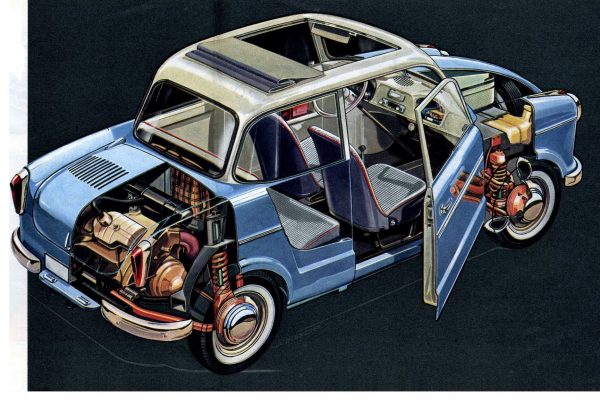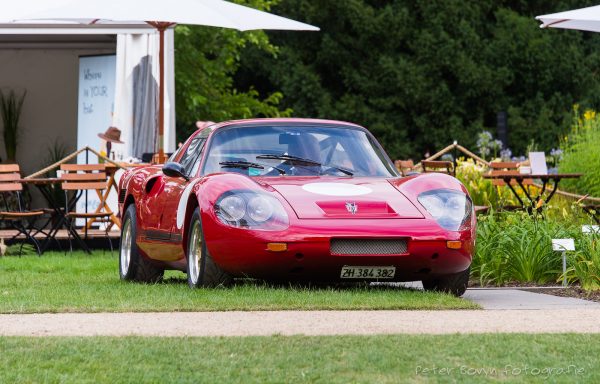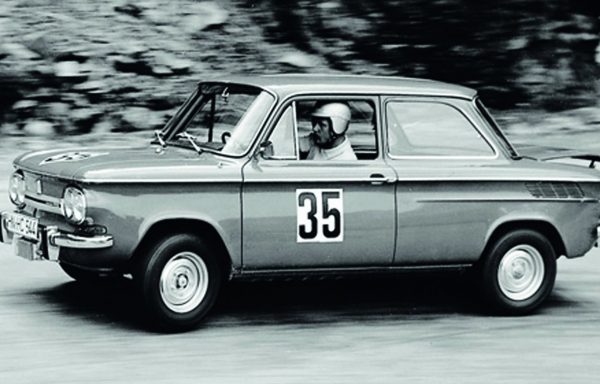NSU Prinz III
A Refined Classic
The NSU Prinz III, introduced in 1960, marked a significant refinement of the Prinz series. With its enhanced design, improved performance, and increased comfort, the Prinz III built upon the successes of its predecessors while addressing the evolving needs of drivers. This model exemplified NSU’s dedication to innovation and quality, solidifying its place in the history of compact cars.
The NSU Prinz III, introduced in 1963, represented a significant development in NSU’s lineup of compact cars. As the successor to the Prinz II, the Prinz III aimed to enhance the features and performance of its predecessor while maintaining the affordability and practicality that made the Prinz series popular among consumers.
Historical Background
Launched in a time when compact cars were gaining traction in the automotive market, the NSU Prinz III was designed to cater to the growing demand for economical and versatile vehicles. It featured updated styling and improved engineering, making it a competitive choice for families and urban drivers.
The Prinz III’s introduction coincided with NSU’s commitment to innovation and quality, further establishing the brand as a leader in the small car segment. The model’s production continued until 1973, during which time it garnered a loyal following.
Technical Specifications
The NSU Prinz III was equipped with a larger engine and offered more features than its predecessor, enhancing both performance and comfort. Here are the key specifications:
- Displacement: 1,000 cc
- Compression Ratio: Approximately 9.0:1
- HP Output: 50 hp at 5,800 rpm
- Torque Output: Approximately 8.0 kg/m at 4,000 rpm
- Transmission: 4-speed manual (optional 3-speed automatic)
- Length: 3,350 mm
- Width: 1,460 mm
- Height: 1,390 mm
- Weight: Approximately 850 kg
- Wheelbase: 2,250 mm
- 0-100 km/h: Approximately 16.5 seconds
- Top Speed: Around 130 km/h
Design and Mechanical Features
The NSU Prinz III featured a modern design and practical features that catered to the needs of compact car buyers.
- Updated Exterior Design:
- The Prinz III showcased a more rounded and aerodynamic shape compared to the Prinz II, with updated styling elements that contributed to its contemporary look.
- It maintained the two-door layout but offered improved access to the rear seats, making it more family-friendly.
- Air-Cooled Inline-Four Engine:
- The Prinz III was powered by a 1,000 cc air-cooled inline-four engine, delivering a balance of power and efficiency. This engine design provided reliability and smooth operation, suitable for urban commuting.
- With an output of 50 hp, the Prinz III was capable of adequate performance for daily driving, maintaining the characteristics of its predecessors.
- Suspension System:
- The front suspension utilized MacPherson struts, while the rear featured a solid axle design, contributing to a stable and comfortable ride. This combination was effective in handling various road conditions.
- The suspension setup allowed for good maneuverability, making the Prinz III suitable for city driving.
- Interior and Comfort Features:
- The interior of the Prinz III was designed for comfort and practicality, providing enough space for up to four occupants. The layout was straightforward, with easy-to-read instruments and controls.
- Seating was comfortable, making it suitable for longer journeys, and the rear seat could fold down to increase cargo space when needed.
- Braking System:
- The Prinz III was equipped with drum brakes on all four wheels, offering sufficient stopping power for its size. While not as advanced as disc brakes, this system provided reliable performance for everyday driving.
Driving Experience and Performance
The NSU Prinz III offered a practical and enjoyable driving experience, characterized by its nimble handling and efficient engine. While it was not a performance-oriented car, it was well-suited for city driving and daily commutes.
The lightweight construction and compact dimensions made the Prinz III easy to navigate through urban environments, while the engine provided adequate power for acceleration and highway use. The car’s comfortable ride and practical design contributed to its appeal among families and young drivers.
Legacy and Impact
The NSU Prinz III played a vital role in NSU’s success in the small car market during the 1960s. Its combination of affordability, practicality, and reliable engineering made it a popular choice among consumers.
While production ended in 1973, the Prinz III remains a classic example of compact car design from its era. It is appreciated by collectors and automotive enthusiasts for its historical significance and representation of the innovative spirit of NSU.
Today, the NSU Prinz III is regarded as a notable model that reflects the brand’s dedication to producing efficient and versatile vehicles. Its legacy continues to inspire interest in compact cars and serves as a reminder of NSU’s contributions to the automotive industry during a transformative period.




